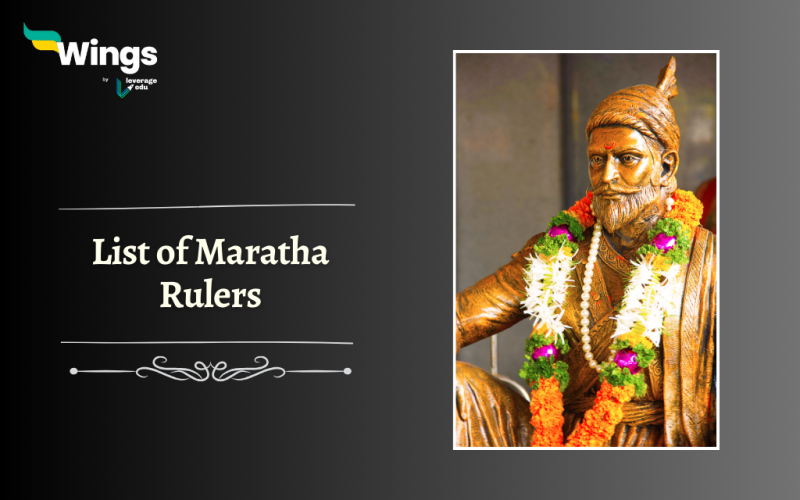The greatest Maratha dynasty was the ultimate threat to the Mughal dynasty, which also covered a major part of erstwhile India. An empire which had the strongest emperor won in almost every way that was present. At the peak of its success, this empire was spread over an area of 250 million acres. This will cover the list of Maratha rulers and how the dynasty collapsed.
History of the Maratha Empire
Chattarpati Shvaji’s victory over the Mughal dynasty and the Bijapur Sultanate made the Maratha empire rise to power. It became the ground of the formation of the Maratha Empire, driven by his vision of Hindawi Swarajya. Establishing the independent Maratha Kingdom with Raigad as its capital marked a turning point.
Shambhu Raje, born on May 14, 1657, played a significant role in the Eight Years’ War against Aurangzeb in the Deccan. However, he was captured by the Mughal Emperor in 1689 while en route to meet Maratha commanders at Sangameshwar. Aurangazeb was imprisoned and subsequently executed for dismissing the Maratha army.
Aurangzeb’s attempts to seize control led to the abduction of Chhatrapati Shivaji’s family, aiming to take over Raigad. In response, Rajaram, Shivaji’s half-brother, ascended to the Chhatrapati throne in 1690, with his coronation held at Jinji Fort in present-day Tamil Nadu. This marked the beginning of a series of uprisings against the Marathas instigated by Aurangzeb.
Chhatrapati Rajaram later relocated to Berar, where he likely passed away around 1700, at Sinhagad in Pune. This sequence of events illustrates the struggle for independence and the formation of the Maratha Empire under Shivaji Maharaj and his successors.
Timeline and List of Maratha Leaders
There were in all 7 rulers who headed the Maratha empire and the list of Maratha rulers along with their years of reign is mentioned below.
| Year | Event |
| 1674 | Shivaji Maharaj was crowned, officially establishing the Maratha Empire |
| 1680-1689 | Reign of Sambhaji, Shivaji’s son |
| 1689 | Sambhaji was captured and executed by Mughal Emperor Aurangzeb |
| 1689-1707 | Maratha Empire under Chhatrapati Rajaram (Shivaji’s younger son) and Tarabai (Rajaram’s wife) |
| 1707-1719 | Maratha Empire led by Shahu I (grandson of Shivaji) |
| 1720-1749 | Reign of Baji Rao I, prominent Peshwa (Prime Minister) |
| 1749-1772 | Reign of Balaji Baji Rao (Nana Saheb), son of Baji Rao I |
| 1774-1796 | Reign of Madhavrao I, another notable Peshwa |
| 1796-1818 | Maratha Empire under Peshwa Baji Rao II |
| 1818 | The Third Anglo-Maratha War ends, Maratha Empire officially ended with the defeat of Peshwa Baji Rao II by the British East India Company. The Peshwa was exiled to Bithoor near Kanpur, marking the effective end of Maratha power. |
Relevant Blogs
| Mahmud Ghazni | Muhammad Ghori |
| Bakhtiyar Khilji | Invasion of Nadir Shah |
| Khilji Dynasty (1290–1320) | Prithviraj Chauhan |
| Mughal Emperor Jahangir | Shah Jahan |
| Emperor Babur | Emperor Humayun |
It was all about the list of Maratha rulers. If you want to know more about topics like this, then visit our page Famous Personalities of India or general knowledge page! Alternatively, you can also read our blog on general knowledge for competitive exams!
 One app for all your study abroad needs
One app for all your study abroad needs













